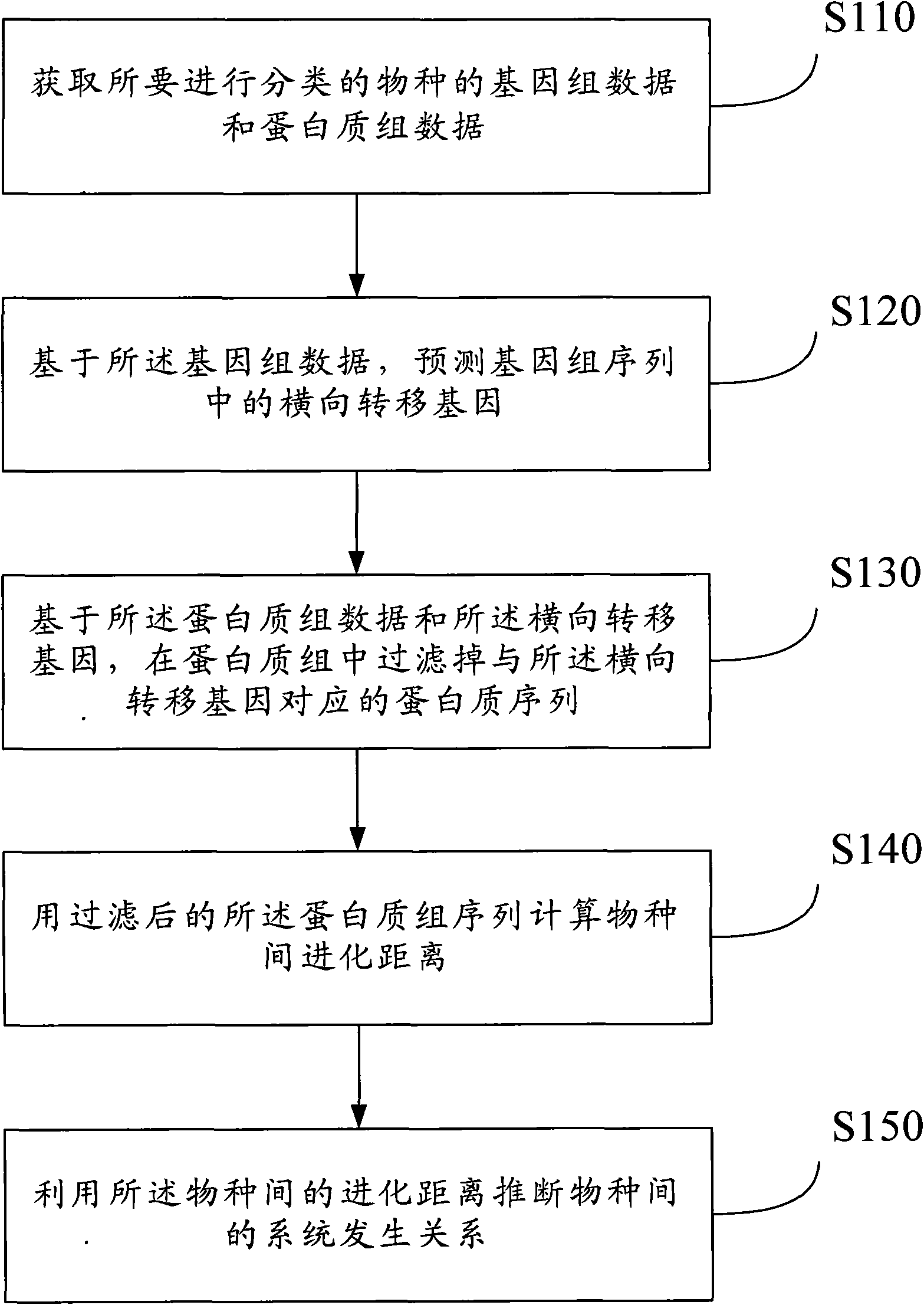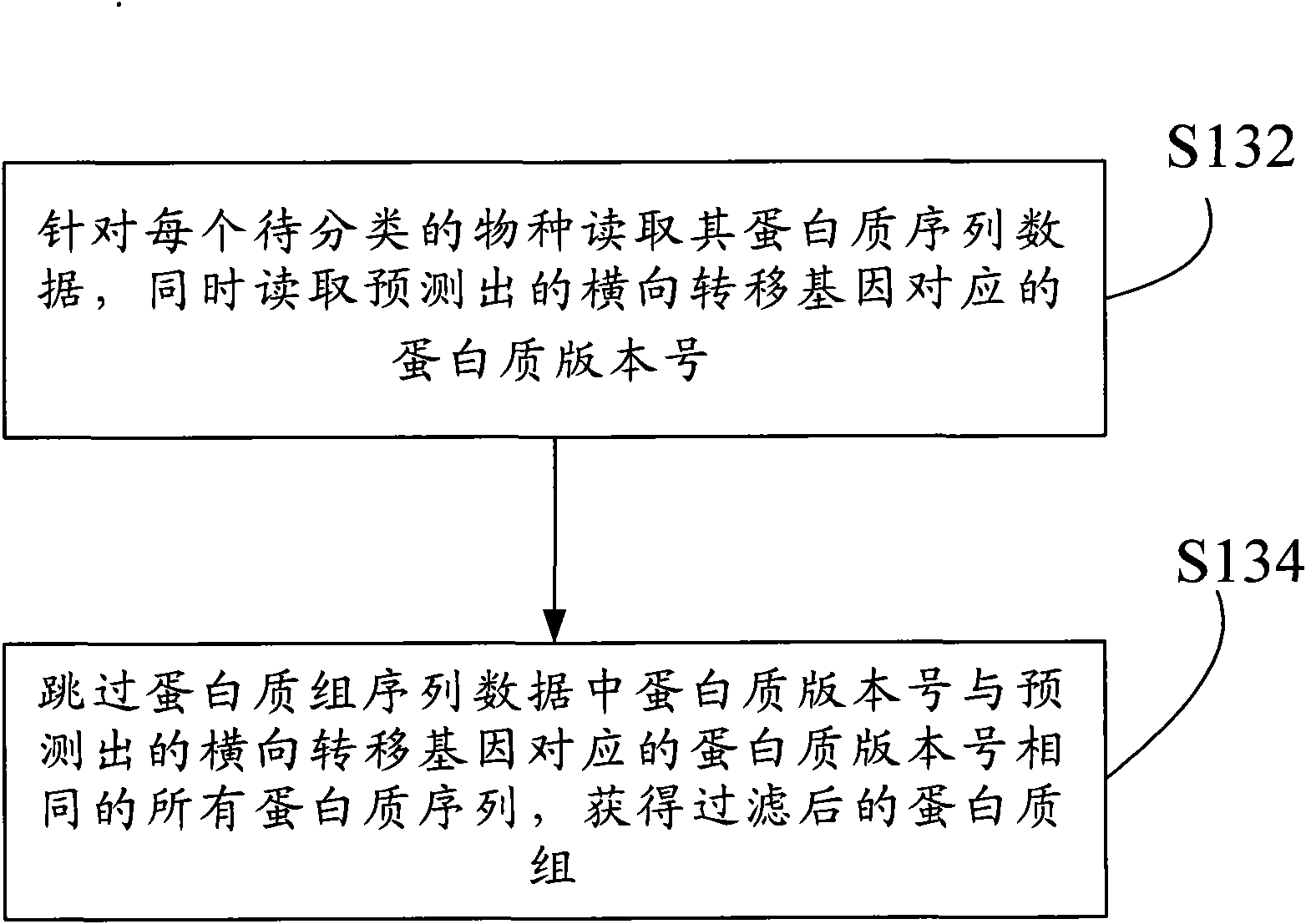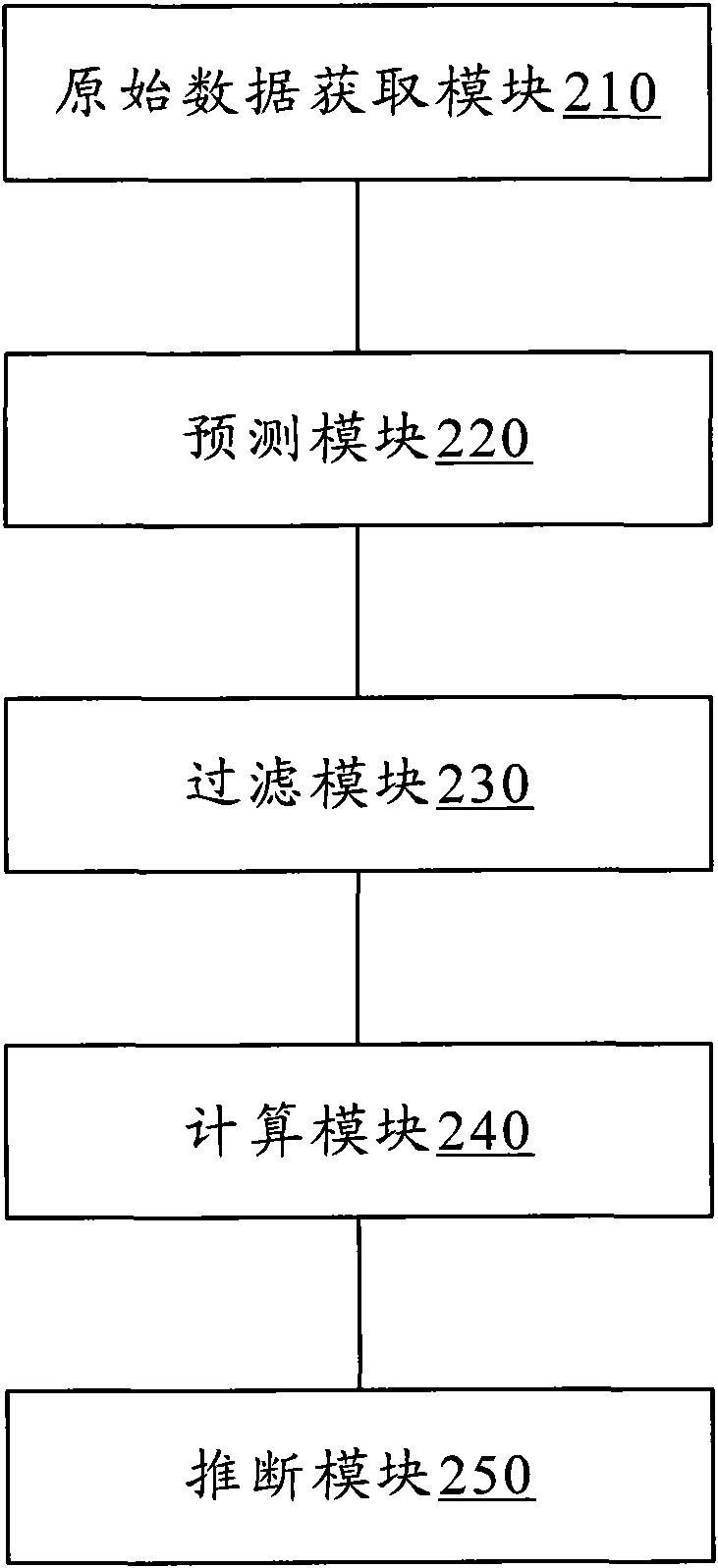Method for filtering, evolving and classifying proteome and system thereof
A technology of proteome and classification method, applied in the direction of evolutionary organisms, special data processing applications, instruments, etc., can solve problems such as failure to see internal connections, inaccurate genetic relationships, and reconstruction interference of horizontally transferred genetic biological phylogenetic relationships, etc. Achieve perfect classification results, reasonable inference of relationship, and improved classification effect
- Summary
- Abstract
- Description
- Claims
- Application Information
AI Technical Summary
Problems solved by technology
Method used
Image
Examples
Embodiment Construction
[0013] The present invention will be described with reference to the accompanying drawings.
[0014] Evolutionary classification method for proteome filtering
[0015] figure 1 is a flowchart of the proteome filtering evolutionary classification method. Such as figure 1 As shown, the following steps are included: raw data acquisition step S110, obtaining the genome data and proteome data of the species to be classified; prediction step S120, predicting the horizontally transferred genes in the genome sequence; filtering step S130, filtering out in the proteome The protein sequence corresponding to the horizontally transferred gene; calculation step S140, using the filtered proteome sequence to calculate the evolutionary distance between species; inferring step S150, using the evolutionary distance between species to infer the phylogenetic relationship between species.
[0016] In the obtaining step S110, the species genome sequence data and proteome sequence data can be fre...
PUM
 Login to View More
Login to View More Abstract
Description
Claims
Application Information
 Login to View More
Login to View More - R&D
- Intellectual Property
- Life Sciences
- Materials
- Tech Scout
- Unparalleled Data Quality
- Higher Quality Content
- 60% Fewer Hallucinations
Browse by: Latest US Patents, China's latest patents, Technical Efficacy Thesaurus, Application Domain, Technology Topic, Popular Technical Reports.
© 2025 PatSnap. All rights reserved.Legal|Privacy policy|Modern Slavery Act Transparency Statement|Sitemap|About US| Contact US: help@patsnap.com



